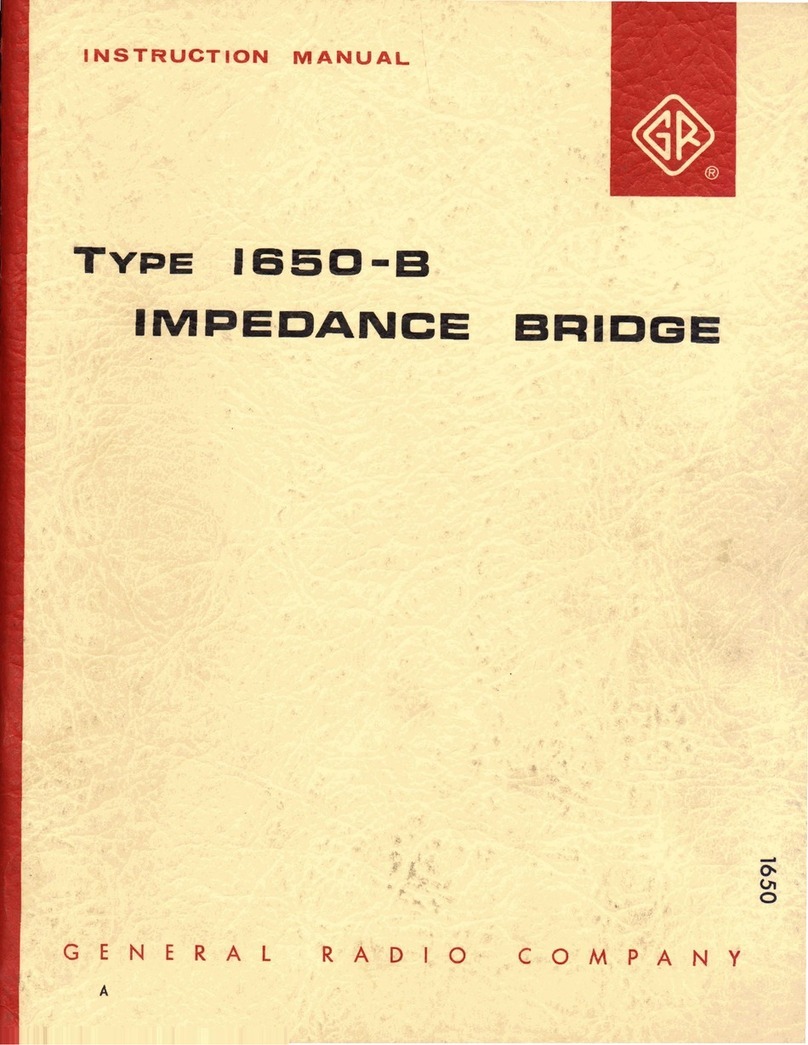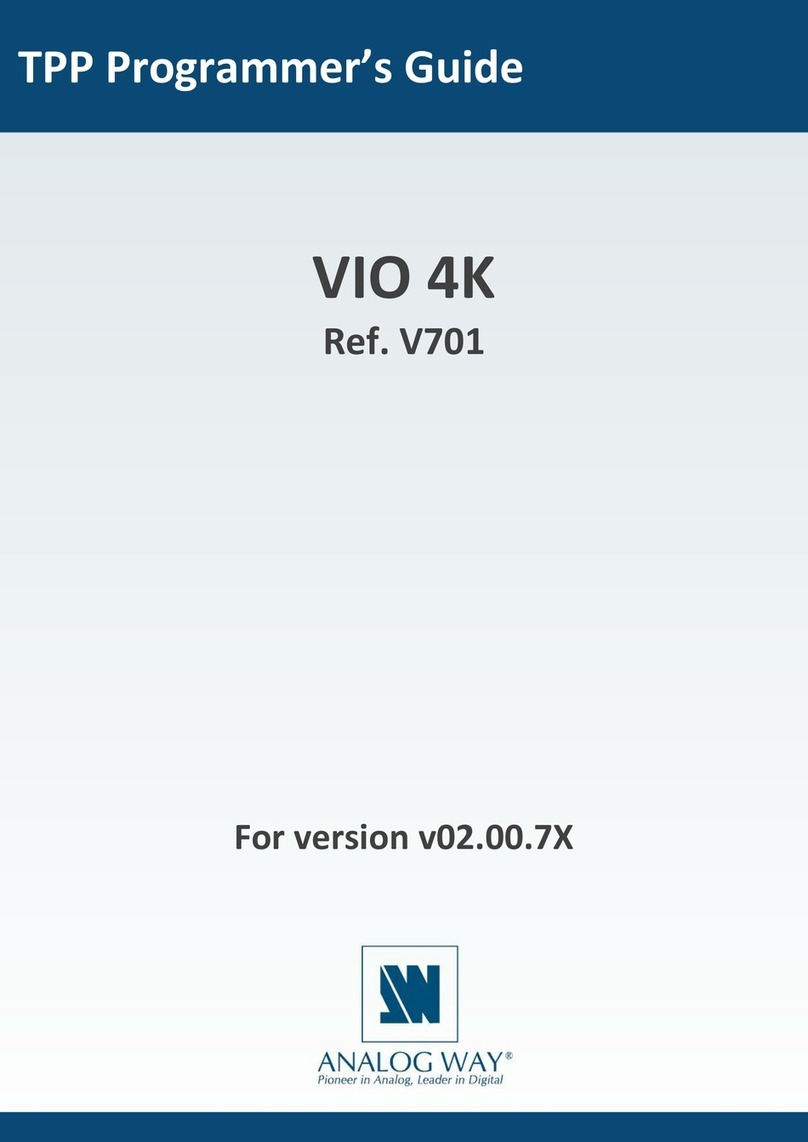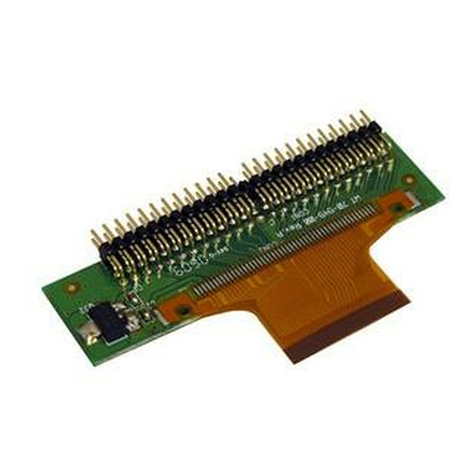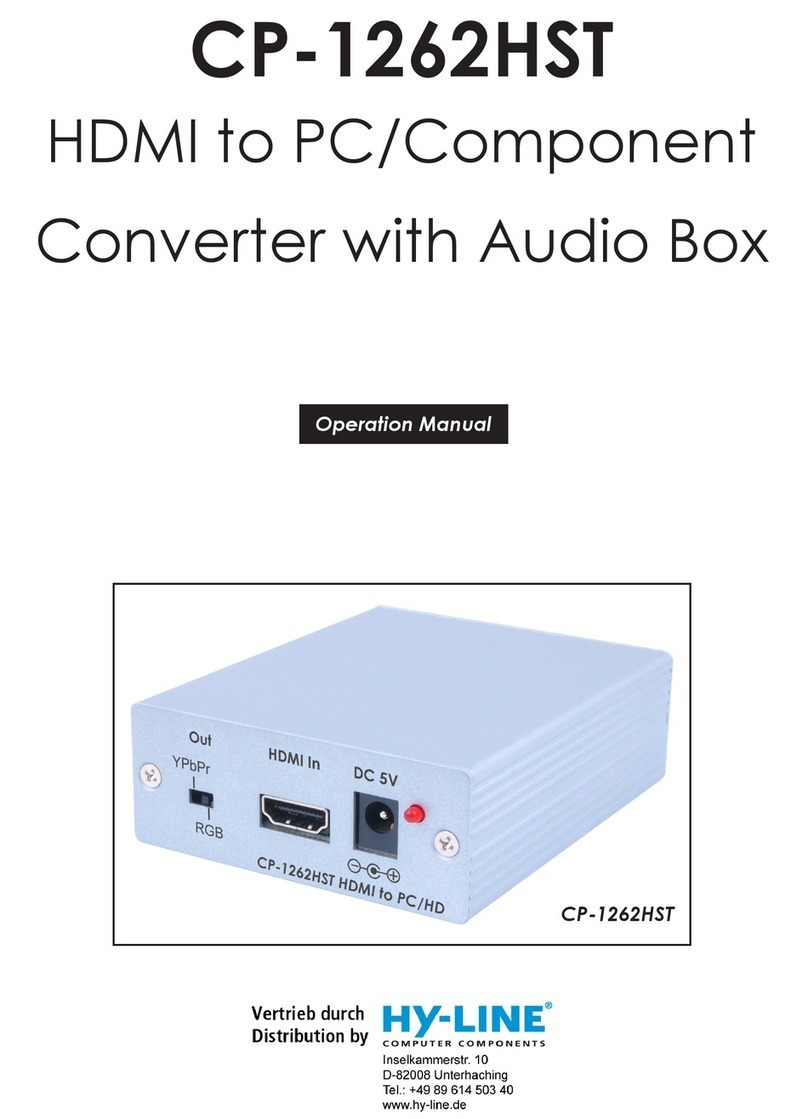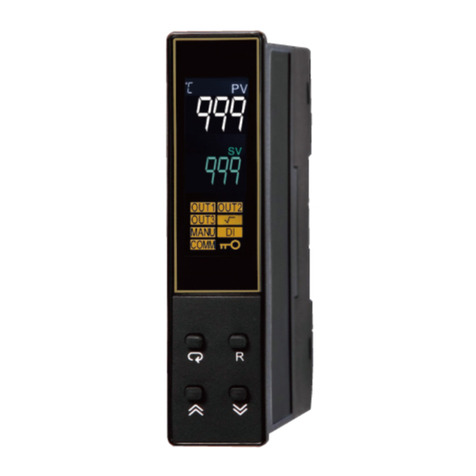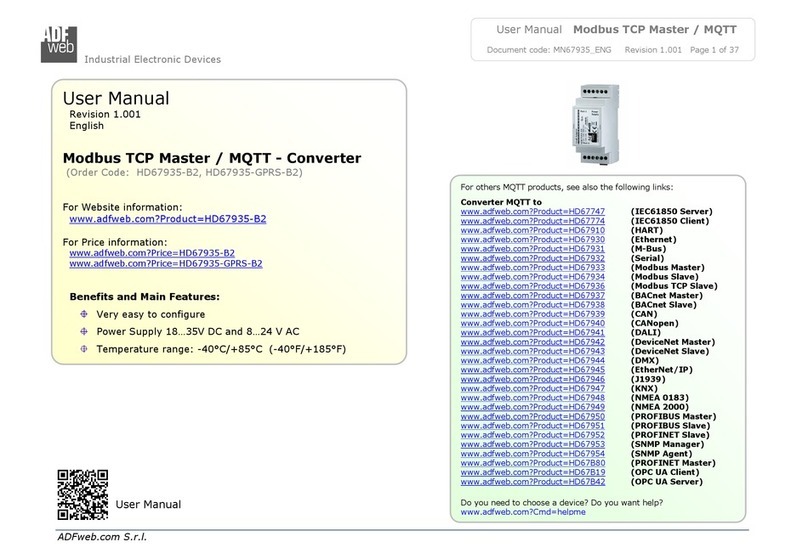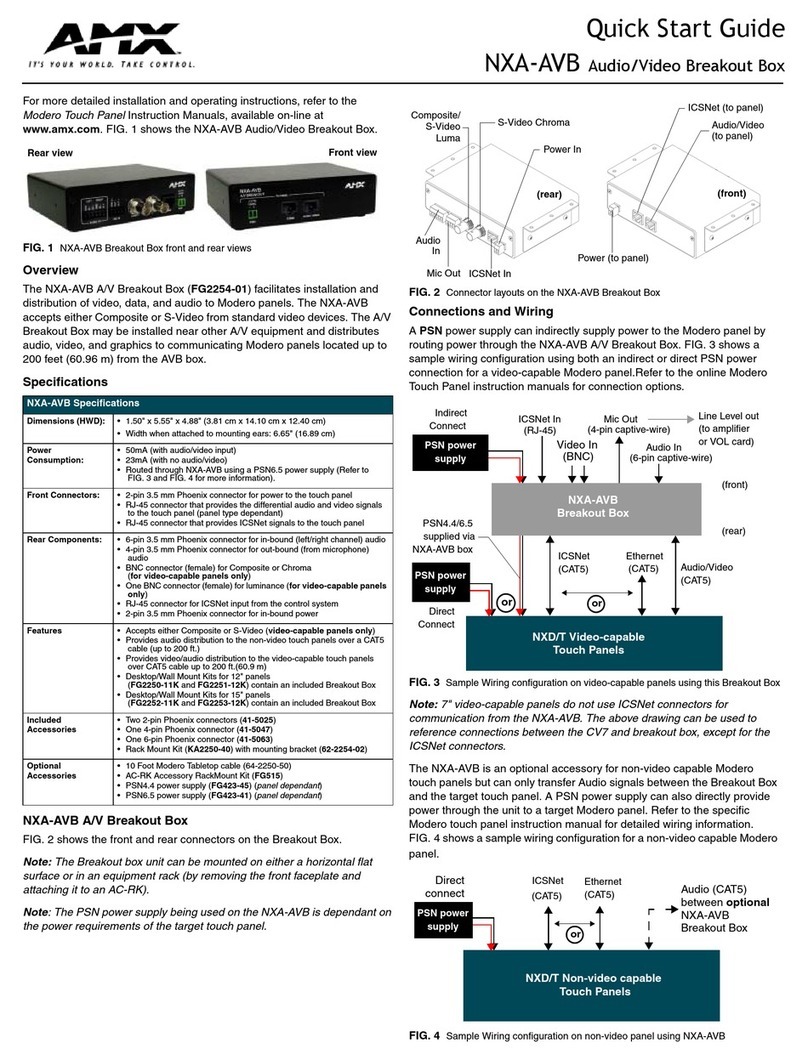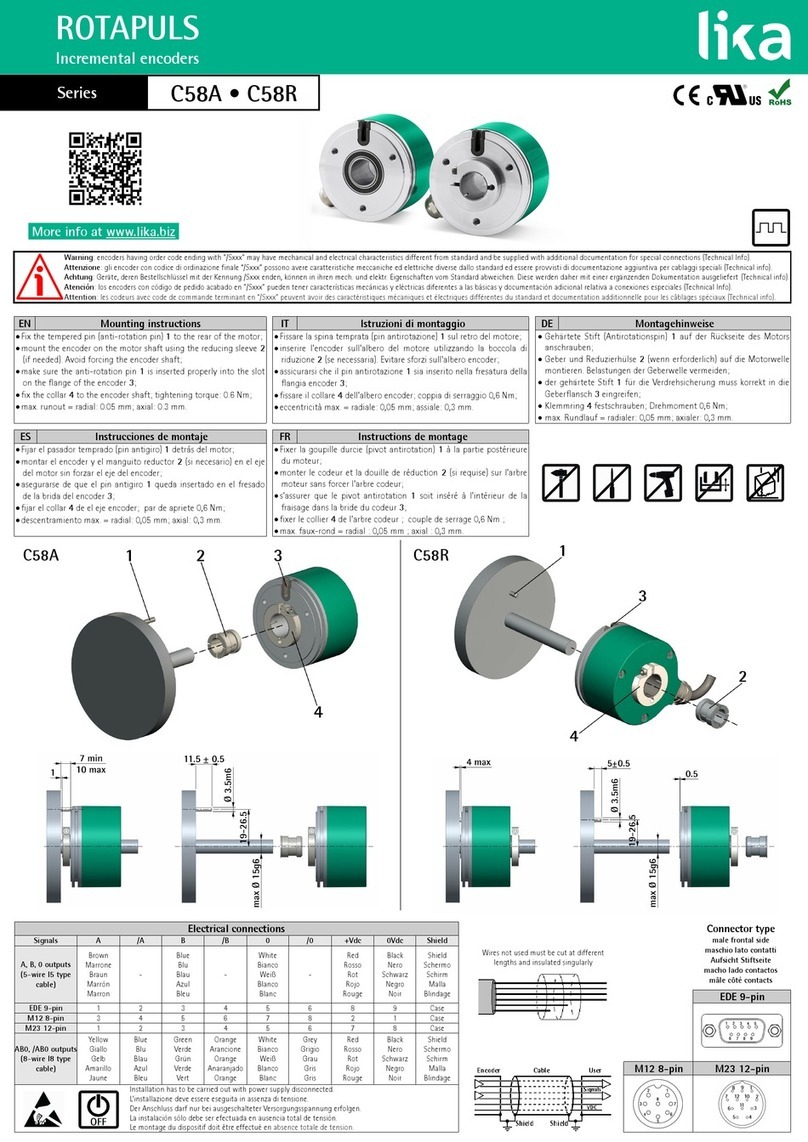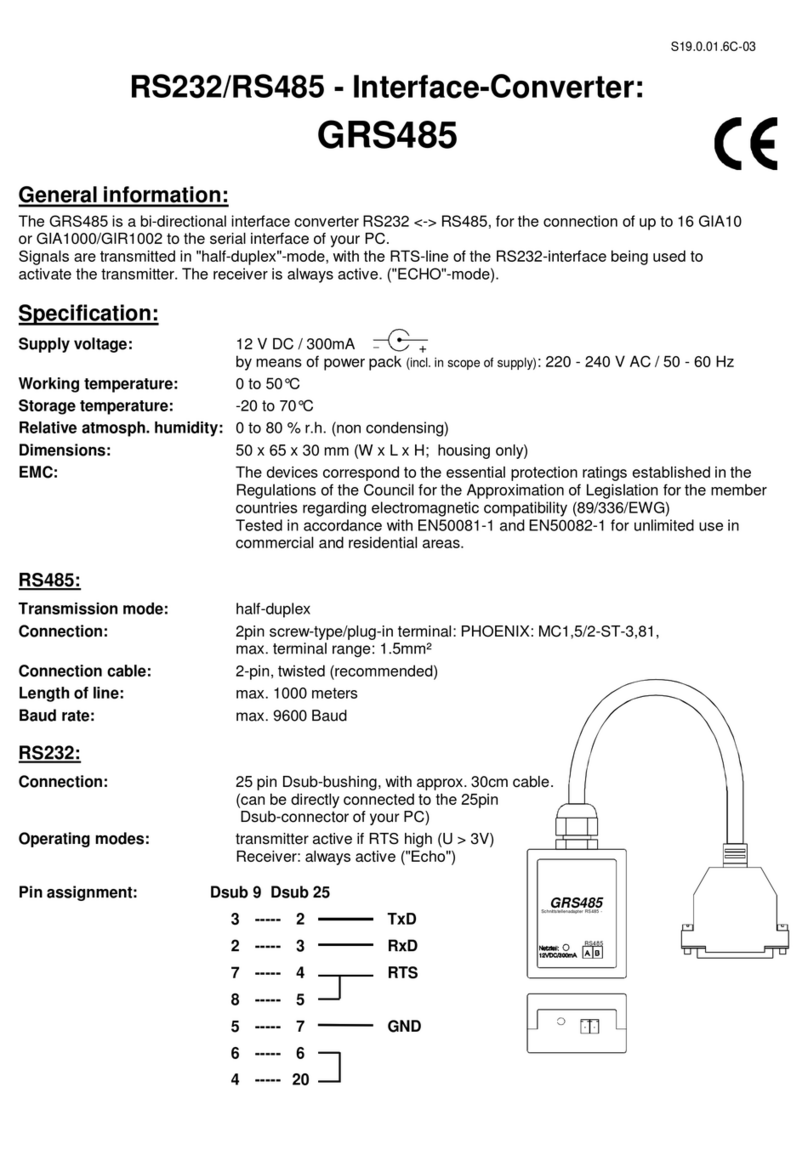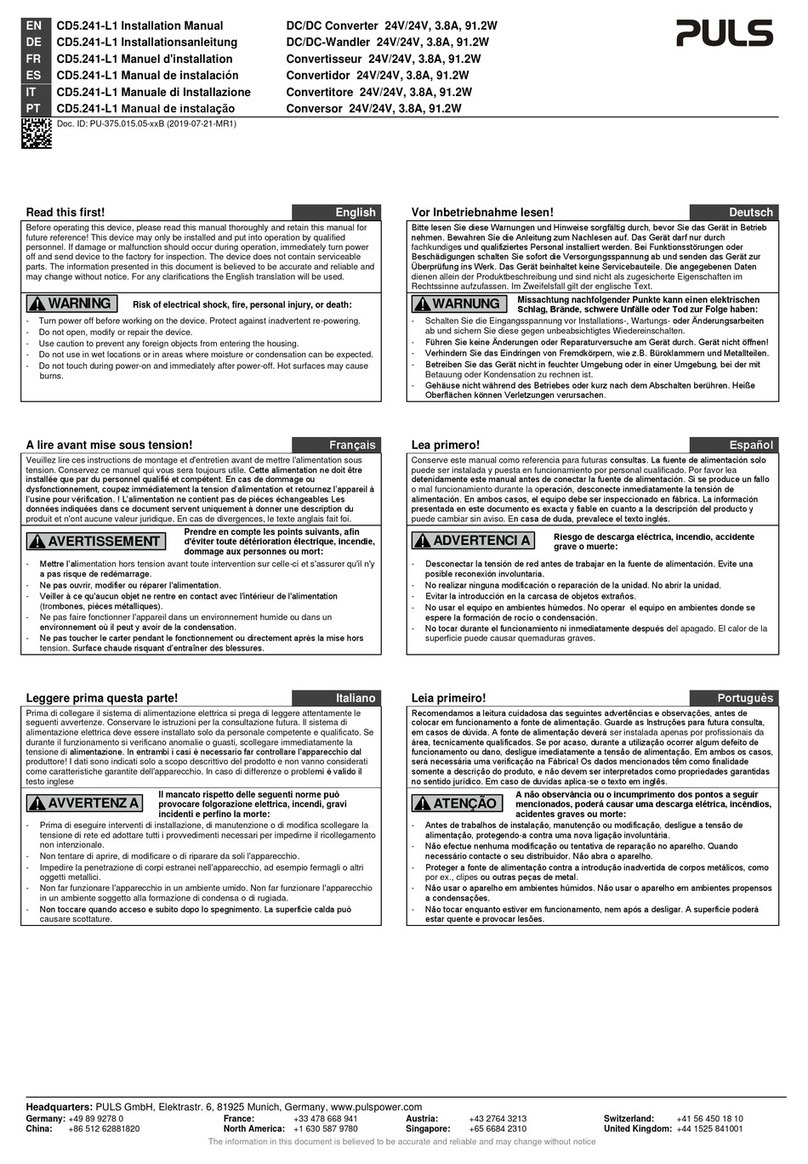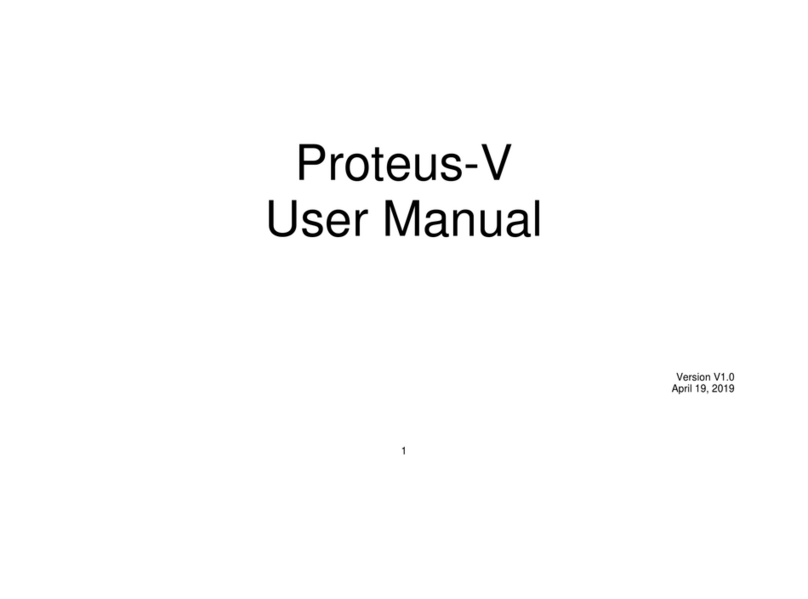GENERAL RADIO COMPANY 1608-A User manual

OPERATING INSTRUCTIONS
TYPE
1608-A
IMPEDANCE
BRIDGE
;1.
GENERAL
RADIO
COMPANY
A
..-I
0-
o
OJ
I
»'

OPERATING INSTRUCTIONS
TYPE
1608-A
IMPEDANCE
Form
1608·0100·A
February, 1962
BRIDGE
Copyright
1962 by
General
Radio
Company
West
Concord,
Massachusetts,
USA
G
ENE
R A L R A 0 I 0
COMPANY
WEST
CONCORD,
MASSACHUSETTS,
USA

TABLE
OF CONTENTS
Section
1. INTRODUCTION
1.1
Purpose.
.....
1.2
Description.
...
1.3
Symbols,
Abbreviations,
and
Definitions
1.4
Series
and
Parallel
Parameters
.
1.5
Accuracy
of
Measurements
. .
Section
2.
OPERATING PROCEDURE .
2.1
Installation
• . . . . • . . .
2.2
Interpretation
of
"X"
in
Read-out
2.3 DC
Resistance
Measurements..
....
2.4 AC
Measurements
using
Internal
Generator.
2.5
AC
Measurements
with
External
Generator.
1
· 1
1
1
4
• • • 4
9
• 9
• • • 9
· 9
.12
·
.19
Section
3. SPECIAL MEASUREMENTS • . . . . . . . • 22
3.1
Application
of
DC Bias
to
Unknown.
. . . . . . 22
3.2
Measurements
on
Shielded
Three-Terminal
Components
• .
.26
3.3
Remote
Measurements
. . . . . . . . .
.26
3.4
Use
of
Type
1650-P1
Test
Jig
• • . . . . . . . .
•.
..27
3.5
Measurements
on
Grounded
Components
• . . • . . . • •
.27
3.6
Limit
Testing
. . . . . . . . . . . • . . • • •
..
.
27
3.7
Measuring
Resonant
Frequency
and
Resonant
Impedance
of
Tuned
Circuits
• . . • . . • . . . . . 27
Section
4. PRINCIPLES
OF
OPERATION
4.1
Bridge
Circuits
• . . . . •
4.2
Bridge
Sources
and
Detectors
•.
4.3
Bridge
Switching.
.......
4.4
Centade
Operation
. • • • . • •
4.5
Phase-Compensation
Techniques.
Section
5. SERVICE AND MAINTENANCE
5.1
General.
. . • • .
5.2
Calibration
Checks.
...
5.3
Adjustments.
• . . •
•.
• •
5.4
Replacing
Indicator
Lamps
•
5.5
Trouble-Shooting
Suggestions
• .
5.6
Tables
of
Test
Voltages
.28
·
.28
· .
.28
.29
.29
• • • . 30
.31
.31
.31
.32
. . . • . 33
. .
..
...33
·
.34

SPECIFICA
liONS
RANGES
Capacitance:
0.05
pf
to
1100
ILf
in seven ranges,
series
or
parallel.
Inductance:
0.05
/Lh
to
1100 h
in
seven ranges,
series
or
parallel.
Resistance:
0.05 mfl
to
1.1 Mfl ac or de.
Conductance:
0.05
nU
to
1.1 Uac
or
de
(20 kMfl
to
0.9 fl).
D
of
Series
C:
0.0005
to
1.
D
of
Parallel
C:
0.02
to
2.
Q
of
Series
L:
0.5
to
50.
Q
of
Parallel
L:
1
to
2000.
Q
of
Seri.es
R:
0.0005
to
1.2 inductive.
Q
of
Parallel
G:
0.0005
to
1.2 capacitive.
ACCURACY
C,
G,
R,
L
At 1kc:
±0.1
%
±0.005%
of full scale except
on lowest
Rand
Lranges
and
highest C
and
G
ranges where
it
is
±0.2
%
±0.005
%of full scale.
Additional
%
error
terms
for
high
frequency
and
large
phase
angle:
C
and
L
[
±0.001
(1
~cy
±0.1D
1
{c
±0.5D
2
]%
of measured
quantity.
Rand
G
[
±0.002C
~cY±O.OOOOOIC~cY±O.lQ]
%
of measured
quantity.
Residual
Terminal
Impedance:
R
~
1mfl, L
~
0.15
/Lh,
C
~
0.25 pf.
Dc
Resistance
and
Conductance:
Same as for
l-kc
measurements, except
that
accuracy
is
limited
by
sensitivity
at
the
range
extremes.
Balances
to
0.1%
are
possible from Ifl
to
IMfl
with
the
internal
supply
and
detector.
D'
(
or
~)
of
C
or
L:
±0.0005
±5%
at
1kc
or
lower.
±0.0005
1
~c
±5%
above
1
kC.\
f
Q
of
R
or
G:
±0.0005
1kc
±2%.
GENERATOR AND DETECTOR
Internal
Oscillator:
1kc ± 1%
normally
supplied.
Plug-in modules for
other
frequencies available
on request. Level control provided.
Internal
Ac
Detector:
Can
be used
either
flat
or
selective
at
frequency of plug-in module
(normally 1kc). Second-harmonic rejection
approximately
25
db;
sensitivity control pro-
vided.
Internal
Dc
Supplies:
3.5 v, 35 v, 350
v;
adjust-
able,
and
power
limited
to
less
than
73'
watt.
Internal
Dc
Detector:
Null
indicator, 1/La/mm.
External
Oscillator
and
Detector:
TYPE
121O·C
Unit
RC
Oscillator
and
TYPE
1232-A
Tuned
Amplifier
and
Null
Detector
are
recommended.
Dc
Bias:
Provision is
made
for biasing capacitors
to
600 v
with
external
supplies,
and
for biasing
current
in inductors.
GENERAL
Accessories
Supplied:
TYPE
CAP-22 3-Wire
Power
Cord;
spare
fuses
and
indicator
lamps.
Accessories
Available:
TYPE
1650-Pl
Test
Jig;
external
generator
and
detector, if used, as
listed above.
Power
Input:
105
to
125 (or 210
to
250) volts,
50-60 cps, 10
watts.
Mounting:
Either
relay-rack
or
bench, as
listed
below.
Dimensions:
Rack
model, panel, 19
by
12~
inches (485
by
315
mm);
bench
model,
width
19,
height
1272,
depth
11
72
inches (485
by
320
by
295
mm),
over-all.
Net
Weight:
36%
pounds
(17
kg).
General
Radio
Experimenter
reference:
Vol.
36No.
3, March 1962

II
9
12
10
13
3
15
4
6
Figure 1-1.
The
Type
1608-A
Impedance
Bridge
(for
legend
see
page 2).
7 8
16
17
18

INTRODUCTION
SECTION
1
INTRODUCTION
1.
1
PURPOSE.
The
Type
1608-A
Impedance
Bridge
(Figure
1-1)
is
a
self-contained
impedan.ce-measuring
system,
which
includes
six
bridges
for
the
measure'Tlent
of
capaci-
tance,
conductance,
resistance,
and
inductance,
as
well
as
the
generators
and
dete·ctors
necessary
for
de
and
l-kc
ac
measurements.
1.2
DESCRIPTION.
1.2.1 GENERAL.
The
SIX
bridges
contained
in
the
Type
1608-A
are
shown
schematically
in
Figure
1-2.
Provision
is
made
for
ac
and
de
measurements,
both
with
internal
and
external
generator
and
detector.
The
generator
and
detector
connections
for
the
four
"on"
positions
of
the
function
switch
(INT
AC,
INT
DC,
EXT
AC,
EXT
DC)
are
shown
schematically
in
Figure
1-3.
Cs
(
LOW
0\
o
TO
I)
SERIES
CAPACITANCE
RN
Cx'R;C
r
Ox'
IIIC
xRx'OICrRr
Cp
(
HIGH
0\
.02-2
)
PARALLEL
CAPACITANCE
C
x
1.2.2 CONTROLS AND CONNECTORS.
Table
1-1
lists
the
controls
and
connectors
on
the
front
and
rear
panels
of
the
Type
1608-A
Impedance
Bridge.
1.3
SYMBOLS,
ABBREVIATIONS,
AND
DEFINITIONS.
Table
1-2
lists
symbols
and
abbreviations
used
in
this
manual,
together
with
their
definitions.
Figure
1-2.
The
six
bridges.
of
the
Type
16GB-A.
G
p
(CAP
Q)
0-1.2
PARALLEL
CONOI/CTANCE
C
x
RS
(
INO
Q\
0-1.2)
SERIES RESISTANCE
Lx
Rx' RNRA
Rr
Qx"
41L
x
:'
41C
rHr
Rx
Ls
G
LOW
Q\
0.5
-50/
SERIES
INOI/CTANCE
Lx
Lx
'R
N1cr
Ox
,IiIL
x
..
tIICrR
r
Rx
Lp
(
HIGHQ'\
1-
00.../
PARALLEL
INOI/CTANCE
Lx
1

~
__
T-'-Y_PE_16_0_8-_A_I_M_P_E_D_A_N_C_E_B_R_I_D_G_E
_
TABLE
1-1
TABLE
OF
CONTROLS
AND
CONNECTORS
CONTROLS
Fig.
1-
1
Ref
Name
Type
Function
1
Function
5-pos
rotary
switch
Turn
instrument
on or off,
selects
internal
or
external
ac
or de
operation.
2
BRIDGE
SELECTOR
6-pos
rotary
switch
Selects
appropriate
bridge
circuit
for
measurement
of
Cs' Cp,Gp,Rs' L s'
and
Lp.
3
FULL
SCALE
RANGE
7-pos
rotary
switch
Selects
measurement
range,
indicates
full-scale
value
of
CGRL
indicator.
4
CGRL
coaxial
rotary
controls
Main
balance
control.
Small
knob
controls
two
right-hand
digits
of
indicator,
large
knob
controls
three
left-hand
digits.
5DQ
Continuous
rotary
control
DQ
balance
control,
used
for
C
and
L
measurements
6
12-pos
rotary
switch
Q
balance
controls,
used
in G
7Q
11-pos
rotary
sWItch
and
R
measurements.
8
Continuous
rotary
control
9GEN
LEV
Continuous
rotary
control
Controls
output
level
of
internal
generator,ac
and
dc.
10
DET
SENS
Continuous
rotary
control
Controls
sensitivity
of
internal
detector,ac
and
dc.
CONNECTORS
Fig
1-1
Ref
Name
Type
Function
11
EXT
GEN
Jack-top
binding-post
Connection
to
external
gen-
pair
erator,
ac
and
dc.
12
DET
OUT
Jack-top
binding-post
Output
connection
from
in-
pair
ternal
detector.
ac
only.
13 UNKNOWN
Jack-top
binding-post
Connection
to
unknown
pair
component.
14
EXTDQ
Jack-top
binding-post
Connection
to
external
re-
pair
sistance
or
capacitance
to
extend
DQ
ranges.
15 BIAS
Jack-top
binding-post
Connection
to
external
pair
bias
supply.
16
Power
Three-terminal
recessed
Power
input
connector
male
connector
17 3RD WIRE GROUND
Jack-top
binding-post
Connection
to
ground
wire
pair
of
three-wire
power
line.
18
EXT
METER
CON-
Three
jack-top
binding
Connection
to
external
dc
null
NECTIONS
posts
indicator.
J
2

INTRODUCTION
IN
OFF
POSITION
POWER OFF
EXT
GEN DISCONNECTED
METER
SHUNTED
OFF
IN
BETWEEN
OFF
AND
INT
DC
POSITIONS
DC
BRIDGE
OPERATIVE
BUT
METER
SHUNTED
TO
REDUCE
SENSITIVITY
1
R;
1
c;;-
1
~-
R
~_1_
Rs
conductance
<..I\M-)
G
series
conductance
Gs
impedance,
Z
~
R
+jX
reactance,
the
imaginary
part
of
an
impedance
admittance,
y
~
G+
jB
the
imaginary
parr
of
an
admittance
para
lIe
I
re
sistance
Rp
resistance
<..I\M-)
R
~
~
1
series
resistance
Rs
--
Gs
TABLE
1-2
EXT
AC
INT
AC
SYMBOLS
AND
ABBREVIATIONS
~
osc
cap.acitance
.<-1
r-
)
ex:;:
l~J
osc
LEVEL
C
Cs
senes
capacitance
Cp
parallel
capacitance
L
inductance
<-'lmQ\-)
Ls
series
inductance
Lp
parallel
inductance
BIAS
BIAS
z
X
Y
B
Q
G
Gp
parallel
conductance
Gp
Rs
R
Gs
cuL
for
inductors
or
inductive
resistors
Q
~
__
s_
R~
INT
DC
EXT
GEN
EXT
DC
Figure
1-3.
Generator
and
detector
connections.
LOWEST
TWO
R
RANGES
HIGHEST 5R
RANGES
HIGHEST THREE
GRANGES
LOWEST
4
GRANGES
GEN
LEV
for
capacitors
D
R
power
factor
-VR2
+
X2
frequency
angular
frequency
~
21Tf
ohm, a
unit
of
resistance,
reactance
or
impedance
kilohm
1
kD
~
1000 D
megohm 1
MD
~
1,000,000
~D
milliohm
1mD
~
0.001
D
for
capacitive
resistors
Q
~
cuCpRp
d'
. . f R G 1
ISSlpatlOn
actor
~X
~
13
~
Q
1
cuCp
Rp
D
kD
MD
mD
D
PF
mho, a
unit
of
conductance,
susceptance
or
admittance
m0
millimho
1m0
~
.0010
f-LO
micromho 1
f-LO
1 x
10-
60
n 0
nanomho
1
nO
1 x
10-
90
f-Lf
microfarad,
a
unit
of
capacitance
nf
nanofarad
1
nf
~
0.001
f-L
f
~
1
mf-L
f
pf
picofarad
1
pf
~
1x10
-6
f-L
f
~
1
f-Lf-L
f
h
henry,
a
unit
of
inductance
mh
millihenry
1mh
~
0.001
h
f-Lh
microhenry
1
f-L
h
~
1 x 10
-6
h
f
3

~
__
TY_P_E_l_60_8_-A_1
M_P_E_D_A_N_C_E_B_R_I_D_G_E
_
Cs=
(I
+D2)Cp;
1
Cp= 1 +D2 Cs
D2
11
Rs
=--R
= 1 +Q2 Rp(1
+Q2)G
p
1+D2 p
Rp1+D2
(I+Q2)R
s
=--R
D2
s
1Cp
QG
p
Gp=(1 +Q2) Rs'
=--
ev
lC
s
LSRpC
pRp
LpGpRSGp
RS
evC p
Q=-=
Gp
1+
Q2
1
jwLpR
p
Rp+jevLp
Resistance
and
Inductance
z
1.4
SERIES
AND
PARALLEL
PARAMETERS.
An
impedance
that
is
neither
a
pure
reactance
nor
a
pure
resistance
can
be
represented
at
any
specific
fre-
quency
by
either
a
series
or
a
parallel
combination
of
re-
sistance
and
reactance.
The
values
of
resistance
and
re-
actance
used
in
the
equivalent
circuit
depend
on
whether
a
series
or
parallel
representation
is
used.
The
equiv-
alent
circuits
are
shown
in
Figure
1-4.
A
nomograph
for
series-parallel
conversion
is
given
in
Figure
1-7.
The
relationships
between
the
various
circuit
elements
are
as
follows:
1Lp; Lp=1+Q2 L = (1 +D2)L
1+D2
Q2
s s
Figure
1-4.
Equivalent
circuits
lor
complex
impedance.
1.5
ACCURACY
OF
MEASUREMENTS.
1.5.1 CGRL ACCURACY
AT
1KC.
The
basic
bridge
accuracy
is
0.1%.
This
is
a
function
of
the
accuracy
of
the
adjustment
and
stability
of
the
bridge
arms.
The
in-
strument
is
initially
calibrated
to
an
accuracy
of
±0.05%
or
better
and
should
hold
the
0.1%
accuracy
for
well
beyond
the
two-year
warranty
period.
A
simple
calibra-
tion
check
procedure
is
given
in
Section
5.2.
The
lowest-resistance
(I-ohm)
resistance
ratio
arm
is
the
most
difficult
ratio
arm
to
set
aCfurately,
is
the
most
affected
by
switch
and
lead
resistance,
and
has
slightly
poorer
stability
than
the
other
arms.
There-
fore,
the
accuracy
specification
for
the
lowest
imped-
ance
range
for
each
bridge
is
0.2%.
The
fixed
error
of
±0.005%
of
full
scale
or
one-
half
a
digit
on
the
counter
read-out
allows
for
backlash
in
the
adj
ustment
and
for
the
limitations
of
linearity
and
resolution
of
the
vernier
rheostat.
This
fixed
error
gives
an
over-all
accuracy
at
1
kc
(on
all
but
the
lowest
range)
1+D2
1
ev
CpRp
Resistance
and
Capacitance
• 1
Z=R
+-.-
SJ
evC
s
4

INTRODUCTION
of
0.105%
at
full
scale
and
0.15%
at
one-tenth
of
full
scale.
Therefore,
the
final
balance
should
be
made
with
as
many
digits
on
the
counter
as
possible.
1.5.2 TEMPERATURE COEFFICIENT.
The
over-all
temperature
coefficient
of
the
instrument
is
less
than
30
ppm/°c.
This
means
that
there
may
be
a
0.03%
change
in
reading
for a
temperature
change
of
lQoe
(50
OF).
This
change
is
usually
negligible
compared
with
the
change
in
the
unknown
component
for a
similar
tem-
perature
change.
For
the
most
accurate
measurements,
the
bridge
'and
components
to
be
measured
should
be
stabilized
at
a
temperature
near
23 °e
(73
of).
1.5.3 ADDITIONAL
ERRORS
FOR
HIGH
DCAPACI-
TORS/
LOW
Q
INDUCTORS/
AND
HIGH
Q
RESISTORS.
The
DQ
dial
adjustments
used
for
phase
balance
on
the
e
and
L
bridges
are
wire-wound
rheostats.
When
lossy
(high
D
or
low
Q)
components
are
measured,
the
limited
resolution
of
these
adjustments
prohibits
balance
of
the
e
or
L
adjustment
to
its
full
resolution.
A
term
of
0.5%D2
is
added
to
the
specifications
to
allow
for
this
effect,
but
somewhat
better
accuracy
is
possible
with
extreme
care.
Precision
components
generally
have
a
low
enough
D
or
a
high
enough
Q
to
make
this
term
neg-
ligible
(see
Figure
1-5).
kc
Figure
1-6;
Resistance
and
conduct-
ance
errors
vs
frequency.
FREQUENCY
J
ff
~'I
/
JV
1;/
VI/
I
j;
/
TOTAL
ERROR
a·'
~
-'
~
r
IbOOI(~r
~OTAL
ERloR
Q·O
~
VI
.1
0
1
1%/
V/
1
12
-1
/
0002(~)
1/
1/
I
Ike
10ke
100
o
0.0100
10
The
Q
adjustment
for
the
Rs
and
Gp
bridges
con-
sists
of
two
decades
of
mica
capacitors
and
a
variable
capacitor
with
infinite
resolution.
Losses
in
the
mica
capacitors
appear
as
an
R
or
G
error
when
Q
is
rela-
tively
large,
and
the
added
error
term
of
O.l%Q
is
there-
fore
necessa~y
(see
Figure
1-6).
100
1.5.4 FREQUENCY
ERRORS.
The
main
cause
of
addi-
tional
error
on
the
e
and
L
bridges
at
higher
frequencies
is
the
inductance
of
the
pridge
wiring
in
series
with
the
standard
capacitor,
effectively
increasing
its
value
.
This
error
is
proportional
to
f2,
and
is
accounted
for
in
the
added
error
term
0.001%
(fl1
kc)2.
This
term,
which
amounts
to
a0.1%
error
at
10
kc
and
a0.4%
error
at
20
kc,
is
large
enough
to
account
for
other
smaller
sources
of
error
(see
Figure
1-5).
F
or
high
D
(low
Q)
measurements
at
high
frequen-
cies,
there
is
an
added
error
term
due
to
the
inductance
of
the
DQ
rheostats.
This
term
is
O.lD
(f/1
kc).
(See
Figure
2-7.)
The
series
rheostat
(e
s
and
Lp
bridges)
is
phase-compensated
to
a
large
degree,
but
neverthe-
100ke
10ke
FREOUENCY
Ike
Figure
1-5.
Capacitance
and
induct-
ance
errors
vs
frequency.
/
VJ
/
VA
W
TOTAL
ERROR
0·1 "-..
~
V/(/II
I
~
///
(j
l.---
V
~
~
'0
-
0'0.2
./
~
/I
.1
TOTAL
ERROR
0.6/
I
1{~0IC~.)2
I
I
o
0.0
100
10
5

~
_...:..T...:Y_P:......:E.::.....1....:.6...:...:08:.....:.-A...:........:..'
MP
_E
_D_A_N_C_E_B_R_'_D_G_E
_
less
adds
inductance
in
series
with
the
standard
capaci-
tor.
The
inductance
of
the
parallel
rheostat
(C
s
and
Lp
bridges)
is
placed
in
parallel
with
the
standard
capaci-
tor,
and
at
high
enough
D
values
effectively
reduces
the
capacitance
of
this
bridge
arm.
The
error
on
the
Cp
and
Ls
bridges
is
somewhat
less,
and
these
bridges
have
more
useful
D
and
Q
ranges
at
high
frequencies
(see
Figure
2-7).
A
fr~quency-dependent
error
term
is
necessary
for
the
resistance
and
conductance
bridges
because
of
a
network
built
inco
the
standard
resistance
arm
to
com-
pensate
for
stray
capacitance
(refer
to
paragraph
4.5).
The
effective
resistance
of
this
arm
has
one
term
pro-
portional
to
f2
and
one
proportional
to
f4,
requiring
the
added
error
terms
±0.002
(f/l
kc)2
and
±O.OOOOO
1
(fll
kc)4.
The
first
term
is
more
important
up
to
45
kc,
and
adds
an
extra
0.2%
error
at
10
kc
and
0.8%
error
at
20
kc
(see
Figure
1-6).
1.5.5 RESIDUAL TERMINAL IMPEDANCE.
The
ac-
curacy
specifications
are
valid
only
if
the
effect
of
the
residual
te,minal
impedance
of
the
UNKNOWN
connec-
tion
is
considered.
The
residual
resistance
and
capaci-
tance
can
be
easily
measured
and
subtracted
from
the
final
measured
value.
At
high
frequencies
somewhat
more
complicated
corrections
are
necessary,
particu-
larly
at
the
range
extremes,
and
correction
formulae
are
given
in
Table
2-5.
1.5.6 DAND QACCURACY.
The
5-percenc
term
in
the
o
and
Q
accuracy
specifications
for C
and
L
measure-
ments
depends
upon
the
tracking
accuracy
of
the
DQ
6
rheostats
with
the
dial
calibration.
The
fixed
term,
±0.0005,
depends
upon
the
phase
angle
of
each
arm
of
the
bridge,
and
many
compensating
components
are
re-
quired
to
achieve
this
accuracy
(refer
to
paragraph
4.5).
This
specification
of
±O.OOO')
holds
for
measurements
made
down
to
1/20
of
-the
full-scale
CGRL
counter
read-
ing.
Below
this
reading,
the
phase
angle
of
the
vernier
CGRL
adjustment
(R4),
even
though
compensated
for,
can
add
additional
DQ
error.
This
could
amount
to
an
error
of
0.001
at
1/100
of
full
scale
and
0.005
at
1/1000
of
full
scale.
The
detector
sensitivity
is
also
aHmiting
factor
here.
Lower
CGRL
ranges
should
be
used
to
achieve
better
D
and
Q
accuracy.
At
high
frequencies
the
DQ
error
increases
be-
cause
the
phase
angles
of
the
bridge
arms
increase
with
f.
Therefore,
this
fixed
error
term
is
0.0005
1
~c
above
1
kc.
At
frequencies
below
1
kc,
the
D
accuracy
cannot
be
improved
because
it
is
limited
by
the
Dof
the
stand-
ard
capacitor.
The
percent
term
in
the
Q
accuracy
for Rs
and
Gp
bridges
is
±2%,
which
is
limited
by
the
accuracy
of
the
capacitance
decades
used
for Q
adjustment.
The
fixed
term
is
±0.0005
at
1
kc,
just
as
in
the
Land
C
bridges,
since
the
same
phase
angle
considerations
apply.
How-
ever,
for
the
Rs
and
Gp
bridges,
this
term
is
±0.0005
rk
at
higher
and
at
lower
frequencies.
This
gives
ex-
i.remely
good
Q
accuracy
at
low
frequencies,
but
does
not
help
in
the
measurement
of
the
time
constant
(Q/
c..:)
of
resistors,
which
is
independent
of
frequency
(except
at
very
high
frequencies).

INTRODUCTION

~
_T_Y_P_E_l_60_8_-A_1
M_P_E_D_A_N_C
_E_B_R_I_D_G_E
_
0.01
2
0.02
3
4
0.0001
0.03
5
0.04
6
0.0002
7
0.05
8
0.06
9
10
0.0005
0.07
0.08
0.09
0.001
0.1
20
0.002
0.2
30
0.00
0
0.01
0.3
0.4
60
Q02
70
Q5
80
0.6
90
100
0.05
0.7
0.8
0.9
0.1
I
200
0.2
300
0.5
400
500
600
700
800
900
61000
7
8
9
-10
Q
XL
LS
(ANY
FREQ)
(I
kc
ONLY)
•
m.o.
nh
..
.0.
ph
..
k.o.
mh
2
m.o.
1---------------------------;.
.0.
1----------------------------1
..
k.o.
1---------------------------;
..
10
9
8
7
6
5
200
300
400
1000
900
800
700
600
500
Figure
1-8. Nomograpb for
conversion
of
Rs
to
Ls
and
vice
versa.
8

SECTION
2
OPERATING
2.1
INSTALLATION.
2.1.1
POWER
CONNECTIONS.
Connect
the
bridge
to
a
suitable
power
source
as
indicated
on
the
plate
above
the
power
receptacle
on
the
rear
of
the
instrument
(115
or
230v,
50-60
cps).
A
three-wire
power
cord
is
sup-
plied.
2.1.2 GROUNDING.
The
bridge
should
generally
be
op-
erated
with
the
bridge
chassis
grounded
except
in
spe-
cific
cases
where
the
unknown
component
or
a
de
bias
supply
should
be
grounded
(refer
to
paragraphs
3.1.
5
and
3.5).
The
ground
connection
is
made
through
the
three-
wire
power
cord
to
the
3RD WIRE GROUND
terminal
on
the
rear
of
the
instrument.
This
terminal
should
be
con-
nected
to
the
adjacent
CHASSIS
terminal
unless
the
bridge
must
be
ungrounded.
If
the
three-wire
power
cord
is
not
used,
this
connection
should
be
made
externally.
2.1.3 MOUNTING.
The
instrument
is
available
as
either
the
Type
1608-AM, for
bench
mounting,
or
Type
1608-AR,
for
relay-rack
mounting.
The
bench-mounting
model
is
equipped
with
aluminum
end
frames,
while
the
Type
160B-AR
includes
mounting
brackets
for
relay-rack
in-
stallation.
I~structions
for
assembly
accompany
these
brackets,
which
may
be
ordered
separately
(Type
ZSU-6-7)
to
convert
from
bench
to
rack
use.
Type
ZSU-6-7
mounting
brackets
are
of
a
unique
General
Radio
design
which
permits
the
instrument
to
be
pulled
out
on
slides
for
service.
Eith"er
chassis
or
cabinet
can
be
removed
from
the
rack
independently
of
the
other.
2.2 INTERPRETATION OF
·X·
IN
READ-OUT.
The
main
CGRL
indication
consists
of
up
to
five
digits
displayed
in
an
in-line
read-out.
Th~
three
left-
hand
digits
are
controlled
by
the
larger
of
the
two
con-
centric
CGRL
controls;
the
two
right-hand
digits
are
controlled
by
the
smaller
(vernier)
control.
To
provide
an
overlapping
transition
from
full-scale
vernier
reading
(99)
to
the
next
higher
coarse
step,
the
vernier
read:out
extends
beyond
99,
up
to
106.
To
avoid
the
ambiguity
of
two
digits
on
the
same
counter,
an
X
is
used
in
place
of
the
number
10.
To
interpret
a
reading
containing
an
X,
simply
substitute
0for
the
X
and add
1
to
the
digit
im-
mediately
to
the
left
of
the
X.
For
example,
102X3
:::
10303;
99X2
:::10002.
The
letter
X
is
also
used
on
two
of
the
three
Q
OPERATING
PROCEDURE
dials
used
with
the
Rs
and
Gp
bridges.
Here
again,
sub-
stitute
0
in
place
of
the
X
and
add
1
to
the
digit
to
the
left
of
the
X.
For
example,
.IX4
:::.204;
.2XX:::.310.
Users
may
find
it
helpful
to
record
measurement
data
exactly
as
it
appears
on
the
bridge
read-out,
in-
cluding
any
X's
that
appear.
In
that
way,
any
possible
error
in
the
interpretation
of
the
X
can
be
rechecked.
2.3
DC
RESISTANCE MEASUREMENTS.
2.3.1 PROCEDURE.
a.
With
the
function
switch
(1,
Figure
1-1)
off,
check
the
NULL
meter
mechanical
zero
position,
and,
if
necessary,
center
the
pointer
with
the
screw-driver
adjustment
on
the
meter.
b.
Turn
the
DET
SENS
control
almost
fully
counterclockwise.
c.
Set
the
BRIDGE
SELECTOR
switch
to
Rsfor
resistance
measurements
from 0
to
1.1
MD
and
Gpfor
re-
sistance
measurements
above
1
MD
and
for
conductance
measurements
from 0
to
1.1
mho.
d.
Connect
the
resistor
to
be
measured
to
the
UN-
KNOWN
terminals.
e.
Turn
the
function
switch
to
!NT
DC.
NOTE
As
the
function
switch
is
rotated
from
OFF
to
INT
DC,
it
passes
through
an
undetented
posi-
tion
where
the
circuit
is
operative
but
the
meter
sensitivity
is
greatly
reduced.
A
pre-
"
liminary
balance
may
be
made
with
the
switch
in
this
position
instead
of
with
the
DET
SENS
control
turned
down.
f.
Adjust
the
FULL
SCALE
RANGE
switch
and
the
concentric
CGRL
balancing
controls
for a
zero
(center)
reading,
and
adjust
the
DET
SENS
and
GEN
LEV
controls
for
increased
sensitivity
as
necessary.
A
meter
deflection
to
the
right
indicates
that
the
un-
known
is
larger
than
the
indicated
CGRL
dial
setting.
For
greatest
accuracy
the"
reading
should
have
at
least
four
digits
showing.
If
not,
turn
to
the
next
lower
range.
g.
The
value
of
the
UNKNOWN
is
read
directly
on
the
counter
with
the
decimal
point
correctly
located
and
the
unit
illuminated
above.
The
meaning
of
an
X
indica-
tor
is
explained
in
paragraph
2.2.
9

~
__
T_YP_E_l_6_08_-A_1
M_P_E
_D_A_N_C_E_B_R_I_D_G_E
_
I
I
I
I
I
~;k
~
TO
1M
100v
It'
II
~~
~
IV
flOk
TO
lOOk
30
v
r
ty
I"'"""'"
eikTOIOklOv
'I
I
I
I
~
Vd100.0.
TO
Ik.o.
2.5
TO
3v
I I I
11
~~
-
........
~
0.
O·~
:,j....-
t--
I
\00
IV
~\0l;).\0~
I
I~
/V
b
1.0.
TO
10.0.
{;V
~
~
--
~
IV
I
~~
~
0.1
TO
1.0.
I , Ii /V-
11
I
I
II
0I2345678
10
10
O.
100
0.0
1000
For
low-resistance
measurements,
short,
heavy
leads
should
be
used
as
connections
to
the
unknown
component.
Measure
the
zero
resistance
of
the
lead!';
and
terminals
by
connecting
the
free
ends
together,
and
subtract
this
amount
from
the
bridge
reading
with
the
un-
known
in
place.
For
best
connection
to
the
bridge,
screw
the
binding
post
hard
enough
to
notch
the
wire
inserted
in
the
hole.
2.3.3
INTERNAL
VOLTAGE
APPLI
ED
TO THE UN-
KNOWN.
There
are
three
internal
dc
supplies,
each
hav-
ing
a
limiting
resistor
to
limit
the
available
power
to
1/2
watt
or
less
to
avoid
damage
to
the
bridge
compon-
en~s
or
to
the
unknown.
They
are
all
controlled
by
the
GEN
LEV
panel
control.
The
lowest
voltage
supply,
ap-
proximating
3.5
volts
open
circuit,
is
appli~d
"horizon-
tally"
to
the
bridge
(see
Figure
1-3)
and
the
35-volt
and
350-volt
supplies
are
applied
"vertically".
The
FULL
SCALE
RANGE
switch
selects
the
optimum
supply
for
each
range
as
given
in
Table
2-1.
Because
of
the
limiting
resistor,
the
maximum
voltage
applied
to
the
unknown
is
usually
of
much
less
than
the
open-circuit
value.
Figure
2-1
shows
the
ac-
tual
voltage
applied
to
any
unknown
resistor
when
meas-
ured
on
the
R
bridge
(with
a
Il5-volt
line
voltage).
EIA
specifications
for
testing
different
types
of
resistors
are
summarized
in
Tables
2-2
and
2-3.
Figure
2-1
shows
thar
these
standard
voltages
can
be
supplied
from
the
internal
power
supplies
over
most
of
the
resis-
tance
range.
For
low-resistance
measurements
the
GEN
LEV
control
can
be
set
for
the
desired
test
voltage
by
use
of
a
high-impedance
dc
voltmeter
connected
directly
LO
the
UNKNOWN
terminals.
For
high-i:esistance
meas-
urements,
where
the
voltage
is
applied
vertically,
the
ratio
between
the
voltage
across
the
unknown
and
that
across
the
whoT~
bridge
is
fixed
over
each
range
at
null
and
therefore
the
voltmeter
can
be
placed
across
the
bridge
input
(LOW UNKNOWN
terminals
to
chassis)
and
the
GEN
LEV
control
set
to
give
the
"bridge
voltage"
given
in
Tables
2-2
and
2-3.
2.3.2 ACCURACY.
The
accuracy
of
dc
resistance
and
conductance
measurements
is
±0.1%,
±0.005%
of
full
scale
(which
is
±1/2
of
the
last
digit)
on
all
but
the
lowest
R
and
highest
G
ranges
as
long
as
there
is
suf-
ficient
sensitivity.
On
the
lowest
R
and
highest
Grange
the
accuracy
is
limited
by
the
sensitivity
to
±
1/2%
±1
mD.
2.3.4
EXTERNAL
DC
DETECTOR.
The
internal
dc
supplies
and
the
internal
detector
permit
measurements
from 1ohm
to
1megohm
to
0.1
%
when
the
GEN
LEV
and
DET
SENS
controls
are
at
maximum. If
accurate
meas-
urements
beyond
this
range
are
desired
or
if
it
is
neces-
sary
to
make
measurements
at
lower
voltages,
an
exter-
Figure
2.1.
Dc
voltage
applied
to
unknown
resistor
(115-v
line).
10

OPERATING
PROCEDURE
TABLE
2-1
DC
SOURCE
AND
DETECTOR
CONNECTIONS
FULL
SCALE RANGE 1100
mD
I
11
D1110 D1100
Dill
kD 110
kD
11100 kD
Rs
VERTICAL
METER
MVS
HVS
Bridge HORIZONTAL LVS METER
"
Gp
FULL
SCALE RANGE 1100 nU I
11
j.LU
1110
j.LU
1100
j.LU
III
mU
110 mU
11100
mU
Bridge
VERTICAL
HVS METER
HORIZONTAL METER
MVS
LVS
HVS HIGH-VOLTAGE
SUPPLY
MVS
MEDIUM-VOLTAGE
SUPPLY
LVS LOW-VOLTAGE
SUPPLY
350v
open-circuit
35
v
open-circuit
3.5
v
open-circuit
TABLE
2-2
EIA
STANDARD
TEST
VOLTAGES
Fixed
Composition
Resi
stors
(RS172)
RESISTANCE BRIDGE RANGE EIA
TEST
VOLTAGE BRIDGE VOLTAGE*
2.7-9.9
DRs
llD
0.5 - 1v
**
10
-99
D Rs
1l0D
0.5 - 1v
**
100 -999 D Rs
1l00D
2.5 - 3 v
19.2-23v
1000
-9999
D Rs
II
kD 8 - 10 v13.4 -16.7 v
1O-99kD
Rs
1l0kD
24 -
30
v
25.6-32v
100kD-1MD
Rs
1100kD
80-100v
81 -101 v
1MD-up
Gp
1nU
80 -
100v
81 -101 v
TABLE
2-3
EIA
STANDARD
TEST
VOL
T
AGES
Fixed
Film
Resistors
(RS-A6)
Low-Power Wire-Wound
Resistors
(REC-117 up
to
9999
D)
RESISTANCE BRIDGE RANGE EIA
MAX
VOLTAGE
MAX
BRIDGE VOLTS*
less
tha'n
10
DRs
11D
0.3v
**
10 -99 D Rs
1l0D
Iv
**
100 -999 DRs1100 D
3v
23v
1000 -9999 D Rs
llkD
10v
16.7v
10 -
99kD
Rs
1l0k
D
30v
32v
100kD
-1MD Rs
1l00kD
100v
101 v
1MD -up
Gpo
1nU
100v
100v
*
This
is
the
voltage
from
the
LOW
UNKNOWN
terminal
to
chassis.
In
the
EXT
DC
position,
this
is
also
the
voltage
at
the
EXT
GEN
terminals.
**
This
voltage
varies
with
the
resistance
of
the
unknown
(see
paragraph
4.3).
11

~
--,.-_TY_P_E_1_60_8_-A_1
M_P_E_D_A_N_C_E_B_R_I_D_G_E
_
(a.)
EXT
METER
TO
BRIDGE
c
(b)
Figure
2-2.
External
meter
connections.
EXT
METER
nal
detector
with
increased
sensitivity
can
be
used.
The
external
detector
can
be
connected
in
series
with
the
internal
meter,
in
parallel
with
the
meter,
or
in
place
of
the
meter
by
appropriate
connection
to
the
EXT
METER
CONNECTIONS
on
the
rear
of
the
instrument
as
shown
in
Figure
2-2.
2.3.5
EXTERNAL
DC
SUPPLY.
If
higher
voltage
is
required
on
the
unknown
resistor,
an
external
supply
may
be
used.
The
EXT
GEN
terminals
are
connected
directly
across
the
vertical
bridge
diagonal
in
the
EXT
DC
position
of
the
function
switch
and
the
detector
is
across
the
horizontal
diagonal
on
the
top
four
ranges.
Be
careful
not
to
exceed
the
maximum
voltage
or
current
given
in
Table
2-4
in
order
to
avoid
damage
to
the
bridge
components.
If
a
higher
voltage
is
desired
on a
low-valued
un-
known
resistor
(the
lower
three
resistance
ranges),
set
the
function
switch
to
EXT
GEN
but
apply
the
voltage
between
the
BIAS
terminals
and
the
EXT
DQ
terminals
(R
bridge
only).
When an
external
supply
or
detector
is
used,
the
measurement
procedure
is
the
same
as
that
with
the
in-
ternal
supply
and
detector
except
that
the
GEN
LEV
control
does
not
control
the
level
of
an
external
sup-
ply
and
the
DET
SENS
control
does
not
control
the
sen-
sitivity
of
an
external
detector.
2.4
AC
MEASUREMENTS
USING
INTERNAL
GENERA-
TOR.
2.4.1
1-KC
CAPACITANCE
MEASUREMENT.
2.4.1.1
Procedure.
a.
Set
the
GEN
LEV
control
fully
clockwise.
b.
Set
the
BRIDGE
SELECTOR
to:
Cs-
if
the
series
capacitance
is
desired
and
D
is
less
than
1.
Cp
-
if
the
parallel
capacitance
is
desired
and
D
is
be-
tween
0.02
and
2.
(Note:
Cs=Cp
within
0.1%
if
D<
0.03.)
Gp-
if
D
is
greater
than
2
(measure
as· a
conductance,
C=QGe.).
pCt;
TABLE
2-4
MAXIMUM
EXTERNAL
DC
BRIDGE
VOLTAGE
AND
CURRENT
BRIDGE RANGE E
MAX
I
MAX
TERMINALS
Rs
1100mD
1.4v
7l0ma
BIAS
Rs
lID
4.5v
223ma
BIAS
Rs
110D
14.2v
7lma
BIAS
Rs
1100D
22v
17.2ma
EXT
GEN
Rs
llkD
7lv
17.2
rna
EXT
GEN
Rs
110kD
223v
17.2ma
EXT
GEN
.R
s
1100kD
400v
17.2ma
EXT
GEN
Gp
1000nU
400v
.
17.2ma
EXT
GEN
12

c.
Set
the
function
switch
to
!NT
AC.
d.
Connect
the
unknown
capacitor
to
the
UN-
KNOWN
terminals.
e.
If
the
proper
range
setting
of
the
FULL
SCALE
RANGE
is
not
known,
set
the
concentric
CGRL
controls
for a
reading
somewhere
near
5000,
adjust
the
DET
SENS
control
for
an
upscale
meter
reading
and
set
the
FULL
SCALE
RANGE
switch
for aminimum
meter
de-
flection.
f.
Adjust
the
concentric
CGRL
controls
and
the
DQ
control
for minimum
meter
deflection.
The
DET
SENS
control
may
have
to
be
readjusted
to
give
greater
sensitivity
as
balance
is
approached.
g.
The
capacitance
of
the
unknown
is
indicated
directly
on
the
counter
readout
with
the
correct
decimal
point
and
unit
illuminated.
The
D
of
the
unknown
is
in-
dicated
directly
on
the
illuminated
scale
on
the
DQ
dial.
The
meaning
of
an
X
indicator
is
explained
in
para-
graph
2.2.
2.4.1.2
Accuracy.
The
accuracy
of
the
C
reading
is
±O.I% 'of
the
reading
±0.005%
of
full
scale
(which
is
±
1/2
of
the
last
digit)
on
all
but
the
highest
capacitance
range,
where
the
accuracy
is
±0.2% of
the
reading
±0.005%
of
full
scale.
On
the
lowest
C
range
it
is
nec-
essary
to
subtract
the
residual
("
zero")
capacitance
of
the
bridge
terminals,
approximately
0.25
pf, from
the
r~ading
to
determine
the
correct
value
of
the
unknown
capacitor.
If
external
leads
are
used
to
connect
the
un-
known,
this
zero
capacitance
is
increased
and
should
be
subtracted
from
the
reading.
The
error
caused
by
capac-
itance
between
the
terminals
and
leads
may
be
removed
by
means
of
a
three-terminal
shielded
capacitance
meas-
urement
(refer
to
paragraph
3.2).
The
residual
resistance
and
inductance
of
the
bridge
have
negligible
effect
on
the
Cor D
accuracy
except
for a
slight
D
error
on
the
highest
C
range
(D
error
=
0.006
when
Cx=
1000
pf).
However,
if
long
leads
are
used
when
measurements
are
made
on
large
capacitors,
a
correction
for
the
lead
resistance
and
in-
ductance
may
be
necessary.
The
correction
terms
are
given
in
Table
2-5.
When
capacitors
with
high
0'
s
are
measured,
an
additional
error
of
±(0.5%) D2
is
added
to
the
specifica-
tion
(refer
to
paragraph
1. 5. 3).
This
error
is
negligible
when D
is
less
than
0.2.
2.4.2
l-KC
INDUCTANCE MEASUREMENT.
2.4.2.1
Procedure.
a.
Set
the
GEN
LEV
control
fully
clockwise.
OPERATING
PROCEDURE
Note:
For
some
iron-cored
inductors
the
induc-
tance
measured
will
depend
upon
the
excitation
level
(refer
to
paragraph
2.4.5.4).
b.
Set
the
BRIDGE
SELECTOR
to:
Ls
-
if
the
series
inductance
is
desired
and
Q
is
be-
tween
0.5
and
5"0.
Lp
-
if
the
parallel
inductance
is
desired
and
Q
is
greater
than
1.
(Note:
Ls
=
Lp
within
1%
if
Q
)32)
Rs-
if
Q
is
less
than
0.5
(measure
Rs
and
Q;
Ls=
QRs
refer
to
paragraph
2.4.3).
cu
c.
Set
the
function
switch
to
INT
AC.
d.
Connect
the
inductor
to
be
measured
to
the
UN-
KNOWN
terminals.
e.
If
the
proper
range
setting
of
the
FULL
SCALE
RANGE
is
not
known,
set
the
concentric
CGRL
controls
for a
reading
somewhere
near
5000,
adjust
the
DET
SENS
control
for
an
upscale
reading,
and
set
the
FULL
SCALE
RANGE
switch
for aminimum
meter
deflection.
f.
Adjust
the
concentric
CGRL
controls
and
the
OQ
control
for minimum
meter
deflection.
The
DET
SENS
control
may
have
to
be
readjusted
to
give
greater
sensitivity
as
balance
is
approached.
g.
The
inductance
of
the
unknown
is
indicated
directly
on
the
counter
readout
with
the
correct
decimal
point
and
unit
illuminated.
The
Q
of
the
unknown
is
in-
dicated
directly
on
the
illuminated
scale
of
the
OQ
dial.
The
meaning
of
an
X
indicator
is
explained
in
paragraph
2.2.
2.4.2.2
Accuracy.
The
accuracy
of
the
L
reading
is
±O.I%
of
the
reading
±0.005%
of
full
scale
(which
is
±
1/2
of
the
last
digit)
on
all
but
the
lowest
ranges,
where
the
accuracy
is
±0.2%
of
the
reading
±0.005%
of
full
scale.
When Q
is
low
there
is
an
additional
error
of
0.5%
d2'
which
is
negligible
when
Q
is
approximately
5
or
higher.
On
the
lowest
range,
the
residual
inductance
of
the
binding
posts
(0.14
/-ih)
must
be
subtracted
from
the
reading
in
order
to
obtain
full
accuracy.
If
external
leads
are
used
to
connect
the
unknown
inductor
to
the
bridge,
then
the
residual
inductance
should
be
measured
and
subtracted
from
the
L
reading.
To
measure
this
lead
inductance,
short
the
leads
together,
measure
the
imped-
ance
on
the
Rs
bridge,
and
calculate
Ls=
~s.
Be
careful
to
keep
the
lead
configuration
the
same
for
the
residual
inductance
measurement
and
the
total
induc-
tance
measurement,
since
an
increase
in
the
area
be-
tween
the
leads
would
increase
the
residual
inductance.
13

~
__
TY_P_E_l_60_8_-A-,--'
M_P_E..:....O_A_N_C_E_B_R_'_O_G_E
_
The
residual
resistance
of
the
bridge
is
approxi-
mately
0.9.0.
This
can
cause
a
small
Q
error
when
Lx
is
small.
If
long
leads
are
used,
the
Q
error
becomes
more
important
(see
Table
2-5).
The
residual
bridge
capacitance
of
0.25
pf
can
cause
an
L
error
when
Lx
is
very
large.
However,
this
capacitance
is
usually
neg-
ligible
compared
with
the
capacitance
of
a
large
induc-
tor.
Long
leads
to
the
inductor
may
appreciably
change
the
total
capacitance.
The
corrections
for
these
lead
effects
are
given
in
Table
2-5.
When
inductors
with
low
Q's
are
measured,
an ad-
ditional
error
term
of
±0.5%
~
2
is
added
to
the
specifi-
cations
(ref
er
to
paragraph
1.5.
3).
This
error
is
neglig-
ible
when
Q
is
greater
than
5.
TABLE
2-5
CORRECTIONS FOR ERRORS CAUSED BY TERMINAL AND LEAD IMPEDANCES
(Add or
subtract
from
the
measured
value
as
indicated.)
Measured
Series
Resi
stance
Series
Inductance
Parallel
Capacitance
Ro=0.9
mD
t
leads
Lo=0.14
J.1.h
tleads
Co
=0.25 pf t
leads
CsNO
ERROR
-u.;2LoCx2
-C
o
(1-D
x
2)
D-u.;CxRc
-w
2LoCxDx+ D
Co
(1 +D2)
ex
Cp
+2R
oDx
u.;C
x2
-w
2Lo
Cx
2(1 - Dx
2)
-Co
D
-u.;C
xRo(1 +
D/)
-w
2LoCxDx(1 + Dx
2)
+
Co
Dx
Cx
Gp+Gx
2R
o
(1
+
Qx
2)+u.;2L 2G
3(1
-
~)
NO
ERROR
o x u.;GxLo
Q+QxGxRo(1 -
Qx
2)
+wLoG
x(1 +
Qx
2)-
u.;C
o
Gx
2Qx
Rs
-R
oNO
ERROR
+u.;2C 2R
3(1-
-~)
o x
u.;
CoR
x
Ro
u.;L
Q
QXR
___
0+
u.;
Co
Rx(1 +
Qx
2)
xRx
1
LsNO
ERROR
-L
o
-w
2CL2(1
--)
o x Qx2
Q2 Ro_ LoQ1
+Q
--
+u.;2C L(Q
+-)
x
u;L
L x o x x Qx
xx
2Ro1
Lp
+--
-L
(1--)
-u.;2CoLx2
Qw
o Qx2
QRoLo1+u;2CoLxQx I
+ -
(1
+Q2)
-
CQ
x+
Q}
wL
x
Lx
14

2.4.3
1-KC RESISTANCE AND CONDUCTANCE MEAS-
UREMENTS.
2.4.3.1
Procedure.
a.
Set
the
GEN
LEV
control
fully
clockwise.
b.
Set
the
BRIDGE
SELECTOR
to:
Rs
-
if
series
resistance
is
desired,
and
the
resistance
of
the
unknown
is
between
0
and
1
MD
or
if
the
unknown
is
inductive.
Gp
-
if
parallel
conductance
is
desired,
and
the
conduc-
tance
of
the
unknown
is
between
0
and
1mho or
if
the
unknown
is
capacitive.
(Note:
Any
resistor
small
enough
to
require
use
of
the
Rs
bridge
because
of
value
will
be
induc-
tive;
likewise,
any
resistor
large
enough
to
re-
quire
use
of'the
Gp
bridge
will
be
capacitive.
In
the
range
between
1
.0
and
1
MD
the
phase
of
the
resistor
will
determine
which
bridge
is
re-
quired
unless
Q
is
small
enough
to
permit
use
of
either
bridge.
Rsmay
be
calculated
from Gp,
and
vice
versa,
from
the
formula Rs=
_.-L
1_
(1 +Q2) Gp
c.
Set
the
function
switch
to
INT
At.
d.
Connect
the
unknown
resistor
to
the
UNKNOWN
terminals.
e.
If
the
proper
range
setting
of
the
FULL
SCALE
RANGE
is
not
known,
set
the
concentric
CGRL
controls
for a
reading
somewhere
near
5000,
adjust
the
DET
SENS
control
for
an
upscale
meter
reading
and
set
the
FULL
SCALE
RANGE
switch
for aminimum
meter
de-
flection.
f.
Adjust
the
concentric
CGRL
controls
and
the
three
Q
controls
for
the
best
minimum
meter
deflection.
The
DET
SENS
control
may
have
to
be
readjusted
to
give
greater
sensitivity
as
balance
is
approached.
g.
The
resistance
or
conductance
of
the
unknown
isindic~ted
directly
on
the
counter
readou~
with
the
dec-
imal
point
and
unit
illuminated.
The
Q
of
the
unknown
is
read
directly
on
the
Q
readout.
and
is
inductive
or
ca-
pacitive
as
indicated
by
the
lights
(unless
the
Q
balance
is
less
than
0,
in
which
case
the
opposite
is
true).
Note
the
decimal
point
in
the
first·
(coarsest)
adjustm'ent,
which
makes
major
divisions
on
the
vernier
dial
steps
of
0.001.
The
meaning
of
an
X
indicator
is
explained
in
paragraph
2.2.
2.4.3.2
Accuracy.
The
accuracy
of
the
R
or
G
reading
is
±0.1%
of
the
reading
±0.005%
of
full
scale
(which
is
±
1/2
of
the
last
digit)
on
all
but
the
lowest
R
and
high-
est
G
ranges
where
the
accuracy
is
±0.2%
of
the
reading
±0.005%
of
full
scale.
On
the
lowest
R
range
the
residual
resistance
of
the
bridge
(approximating
0.9
mD)
should
be
subtracted
OPERATING
PROCEDURE
from
the
measured
resistance.
Use
short,
heavy
leads
to
connect
the
unknown
resistor,
measure
the
resis-
tance
of
these
leads
by
connecting
the
free
ends
to-
gether,
and
subtract
this
value
from
the
measured
value.
Residual
inductance
and
capacitance
affect
only
the
Q
of
the
resistor.
Corrections
for
these
effects
are
given
in
Table
2-5. When
resistors
with
high
Q's
are
measured,
an
additional
error
term
of
O.I%Q
is
added
to
the
specification
(refer
to
paragraph
1.5. 3).
This
term
is
practically
negligible
when
Q
is
less
th~n
0.2.
2.4.4
MEASUREMENTS USING
INTERNAL
GENERA-
TOR
AT
FREQUENCIES
OTHER
THAN 1KC.
If
<tn
os-
cillator-detector
tuning
unit
other
than
the
l-kc
unit
usually
supplied
is·
used,
the
operating
procedure
is
the
same
as
for
l-kc
measurements,
but
the
accuracy
speci~
fications
and
D
and
Q
ranges
are
the
same
as
those
for
an
external
generator
at
the
same
frequency
(refer
to
Section
2.5).
The
plug-in
unit
gives
the
DQ
multiplier
required
for
the
various
bridges
so
that
it
does
not
have
to
be
calculated
(refer
to
paragraph
2.5.1).
2.4.5
NOTES
ON
AC MEASUREMENTS.
2.4.5.1
Capacitance
to
Ground.
The
Type
1608-A Im-
pedance
Bridge
generally
measures
"ungrounded"
com-
ponents,
since
neither
UNKNOWN
terminal
is
connected
directly
to
the
panel,
which
should
be
grounded
except
for
measurements
on
grounded
components
(refer
to·
para-
graph
3.5).
Capacitance
from
the
LOW
UNKNOWN
ter-
minal
is
placed
directly
across
the
detector
(see
Figure
2-3)
and
does
not
cause
an
error,
but
can,
if
large
enough,
cause
a
reduction
in
sensitivity.
Capacitance
from
the
other
UNKNOWN
terminals
shunts
an
arm
of
the
bridge
and
therefore
causes
an
error
which
can
be
signi-
ficant
if
the
stray
capacitance
is
large
enough.
Table
2-6
gives
the
error
caused
by
a
stray
capacitance
for
each
quantity
measured.
Note
that
for
the
capacitance
bridges
stray
capa-
citance
causes
a
small
capacitance
error.
Since
Ct
is
0.15
Ilf,
it
takes
a
stray
capacitance
of
150
pf
to
cause
D
Figure
2-3.
Capacitance
and
inductance
bridge diagrams,
showing
capacitances
to ground.
15
Table of contents
Other GENERAL RADIO COMPANY Media Converter manuals
